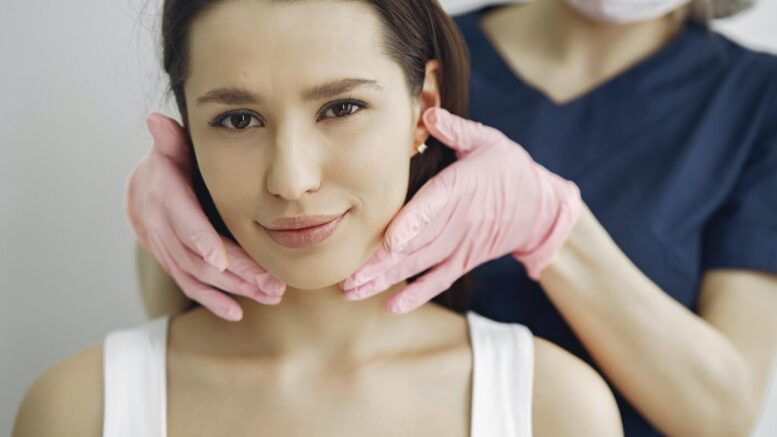Overplucking can easily be considered one of the brow sins every woman did in 2000s, when the trend for extremely thin eyebrows was at its peak height. Some people had no problems with growing their brows back ‒ but for some, a brow pencil became the essential part of their daily makeup routine.
The microblading permanent makeup technique is a game changer, for sure. You can even call it a remedy for over-plucked brows, as the treatment does a great job of finishing the shape of the brow.
Now that thicker and more natural-looking eyebrows are trendy, microblading and other permanent makeup techniques are in-demand. The transformation from before the procedure to after can even be shocking to some!
What can you expect from the procedure?
In essence, microblading is a type of semi-permanent tattooing. During the procedure, an artist creates accurate strokes just beneath the surface of your skin ‒ they resemble real hair and in most cases, you won’t be able to tell it’s a “drawn” brow and not “your own”. Since the result lasts up to three years, the more appropriate name for the treatment would be semi-permanent makeup.
Nevertheless, you won’t have to worry about grooming your brows or applying eyebrow makeup for years ‒ it’s a great feature on its own.
Now, let’s take a peek into the treatment itself.
- The consultation. At this stage, your permanent makeup artist will interview you about contraindications if you have any, and how the treatment will proceed. Also, you will be able to express what you are expecting from results ‒ colors, shapes, and more.
- The preparation. This includes the application of the numbing cream and an outline of your future brow shape ‒ for that, the artist uses a white waterproof pencil. Then, they mix the pigments to create a unique shade that suits your skin tone and install sterile needles.
- The procedure. Using tiny deliberate strokes, the artist outlines your brows and gradually fills the shape with hair-thin incisions that apply the pigment. The direction of every stroke resembles the way your brows would naturally grow, so you can expect realistic results even for overplucked eyebrows.
After the treatment is over, you will receive highly important aftercare instructions. You can book the touch-up appointment right away ‒ usually, the healing period, after which you need one, lasts from two to three weeks. The results last for up to three years, which saves you a lot of money on purchasing endless brow makeup products.

Before and after ‒ the difference is huge!
From thin overplucked 2000s chic eyebrows to gorgeous ones that compliment your facial features ‒ yes, this is a totally possible transformation thanks to the microblading technique.
Apart from a significant visual change, permanent brow makeup boosts your confidence and saves you a lot of time you could have spent on styling and drawing your brows every morning. And who doesn’t want to sleep for five more minutes?
As you can see, this treatment can be highly beneficial. The procedure does a few things simultaneously:
- Adjusts the brow shape. A brow tail way too short? Now you have a “proper” one that looks natural.
- Brings back the symmetry. A perfect face is a symmetrical one ‒ it’s the main beauty concept. Well, microblading can do that for your face ‒ if your brows were asymmetrical, a few tiny strokes can certainly fix that. Bonus points for complimenting other facial features.
- Adds volume. Even adding tiny strokes between existing hairs can do wonders ‒ the brows look fuller and healthier!
Also, you can notice how nice and clean brows visually rejuvenate the face ‒ the look is very young and energizing.
Aftercare tips
In order for your microblading permanent makeup to look perfect, it takes more than just booking an appointment and sitting through it.
Your healing period might take from two to three weeks ‒ the timeframe is highly individual for everyone as people tend to have different skin and immune system properties. For example, there is a chance that older skin will heal for a bit longer than the younger one.
But the principle of the healing process is nothing new.
Think about the pigment, as hypoallergenic as it can possibly be, as of the foreign component inside the skin. When skin cells recognize it for the first time, they “send” immune cells to get acquainted with this new component. As a result, a certain part of the pigment will fade in two weeks ‒ your job here is to make sure it won’t fade in patches.
Also, local reaction always means a bit of swelling and itching, as well as triggered regeneration processes. Now, this is where you really don’t want to intervene. Approximately by the day four, you will notice scabbing appearing ‒ it’s the result of skin regeneration. Do not try to peel it on your own, or the pigment will look patchy and the magic will be gone.
Finally, by the end of the healing period, you will have a perfectly healed skin with shiny new microbladed brows. You might notice, though, that the pigment looks a bit dull ‒ this is the result of your skin cells reacting to the “first contact”. At this point, all you need is a touch-up appointment where the pigment will be renewed.
Take your aftercare seriously as it directly affects the results. Don’t wet your brows for the first few days, don’t sunbathe or spend time in sauna or hot tubs. Doing so increases the risk of partial depigmentation and inflammation.
Also, you might want to use the healing cream your artist can offer to you ‒ the formula is rather calming and soothing, supporting the balance of your healing skin.
